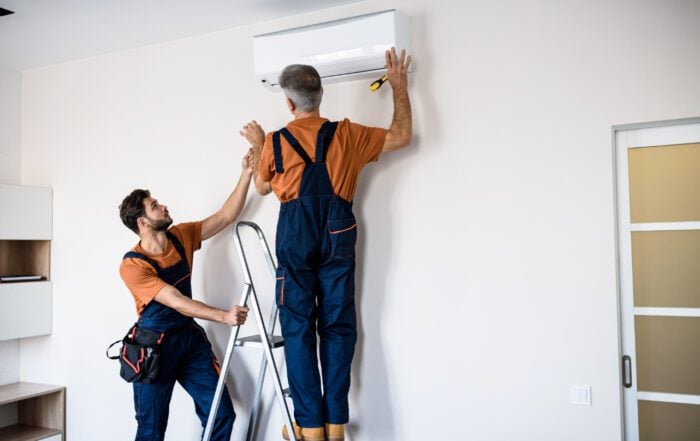Millions of Americans every year are affected by poor air quality in the form of respiratory issues, bacterial infections, and other side effects. Air circulating in an indoor environment can become a breeding ground for harmful contaminants and pollutants. Considering the average person spends 90 percent of their time indoors, it is essential for people to maintain awareness of the importance of maintaining clean air quality in their homes.
Without proper air filtration or prevention methods in place, various air pollutants could pose significant risks to physical health. In this article, we provide you with important information on air pollution sources and how they can affect your health over time.
What Causes Poor Indoor Air Quality?
Poor indoor air quality can occur for various reasons, and it’s important to remain aware of potential sources of air pollution in your home. To help you identify pollutant sources, here are some of the most common ways that could cause your air quality to turn south.
Live Sources
Air pollutants can arise from live sources such as mold, mildew, cockroaches, and dust mines. Signs of mold or mildew within the come could be a rotten smell akin to a damp, musty odor, fungus growing on furniture, and warped walls. However, mold can sometimes grow without any physical signs in your home; instead, your health could take a toll in the form of consistent allergies, a persistent cold or cough, and itchy, irritated skin.
Carbon Monoxide
An odorless and colorless gas, carbon monoxide (CO) is a dangerous pollutant released from fuel-burning stoves, heaters, and other select appliances. Carbon monoxide can be detected by an alarm within your home, but it is important to remain aware of the silent signs in the case of a faulty alarm.
In terms of your health, exposure to carbon monoxide could look as simple as the flu with common symptoms like headaches, fatigue, and nausea. In worst cases, carbon monoxide poisoning could lead to vomiting, breathing difficulties, loss of consciousness, or even death.
Radon
A common source of radon (Rn) comes from soil or rocks, which can cause this odorless, radioactive gas to seep in through cracks in your home’s foundation, floor drains, or dirt floors. Although a home radon test could help you identify the presence of radon in your home, symptoms of radon poisoning include a persistent cough, shortness of breath, and chest pain. If radon builds up indoors, exposure to this harmful pollutant could damage cells in your lungs and pose a higher risk of developing lung cancer.
Pet Dander
Pet hair alone does not cause allergies; rather, it is the pollen, dust, and dander that collects in your pet’s hair and, once shed, pollutes the atmosphere. Pet dander can build up in your home and is often visible on surfaces such as shelving, countertops, and tables. Although a less serious or life-threatening air quality issue, pet dander can pollute your home’s air and cause cold symptoms and respiratory issues such as a runny nose, itchy eyes, and a cough.
Improve the Air Quality in Your Home
Good air quality is essential to your health, and your home should be safe and free from pollutants or contaminants. However, it can be difficult to spot potential sources of air pollution indoors. In this case, a professional can inspect parts of your home and help with source control, ventilation improvement, and air purifier installation.
At Stack Heating, Cooling, Plumbing & Electric, we believe clean air begins with awareness and quality maintenance. If you need professional indoor air quality services, visit our website or contact us today.
Have Any Questions?
If this is an emergency please call 440-937-9134.
Otherwise, please feel free to call us or submit this form to schedule an appointment for service or request an estimate. We will contact you shortly!





